Last updated on May 7th, 2024
Featured image: Experiencing cultural immersion with Lori McCarthy in Mobile, Newfoundland | Photo provided by Food Culture Place
Lessons from a three-day food and cultural immersion program in Newfoundland
by Sandra Phinney
We always learn something when we travel. However, sometimes we dive into the deep end of a learning experience and there’s not an hour or even a second when we are not immersed in a culture, lifestyle or tradition. This is when learning bumps up to a never-to-be-forgotten experience that enriches our lives and understandings.
This happened when my sister and I spent three days with Lori McCarthy and her team in Mobile, Newfoundland taking part in a three-day food and cultural immersion program. Where is Mobile, you might wonder? Population 435, Mobile is about a 35-minute drive from St. John’s, Newfoundland on Canada’s east coast.
Cultural immersion: The story behind the story
Lucky for me, I wasn’t a stranger to Lori, as I had met her in 2018 while on a trip to St. John’s. At the time, Lori was heading up her new company, Cod Sounds.
During this trip, I learned that Lori was born in 1977, and raised with four siblings in Baulin (population under 300)—by parents, Shirley and Bill Butler (her dad: a teacher and fisherman; her mom, was best cook ever of “rough grub.”) But the road leading from her mom’s kitchen and her dad’s fresh catch of the day to the unusual and highly successful business she had created was full of interesting twists and turns.
To wit: coming into her 20s, Lori had some major fears to conquer—including fear of the water. “Well, that was silly,” she told me, “And living on an island with a life steeped in the sea, I was determined to get over it.” Lori took a job on a tour boat; then became a kayak guide; followed by becoming a PADI certified scuba diver. Fears conquered!
Over the next several years, Lori apprenticed in a 5-star restaurant, started a catering company with her mom, and devoured magazines and books about what was happening globally on the food scene. Terms like “local,” “wild,” and “pride of place” spoke to her.
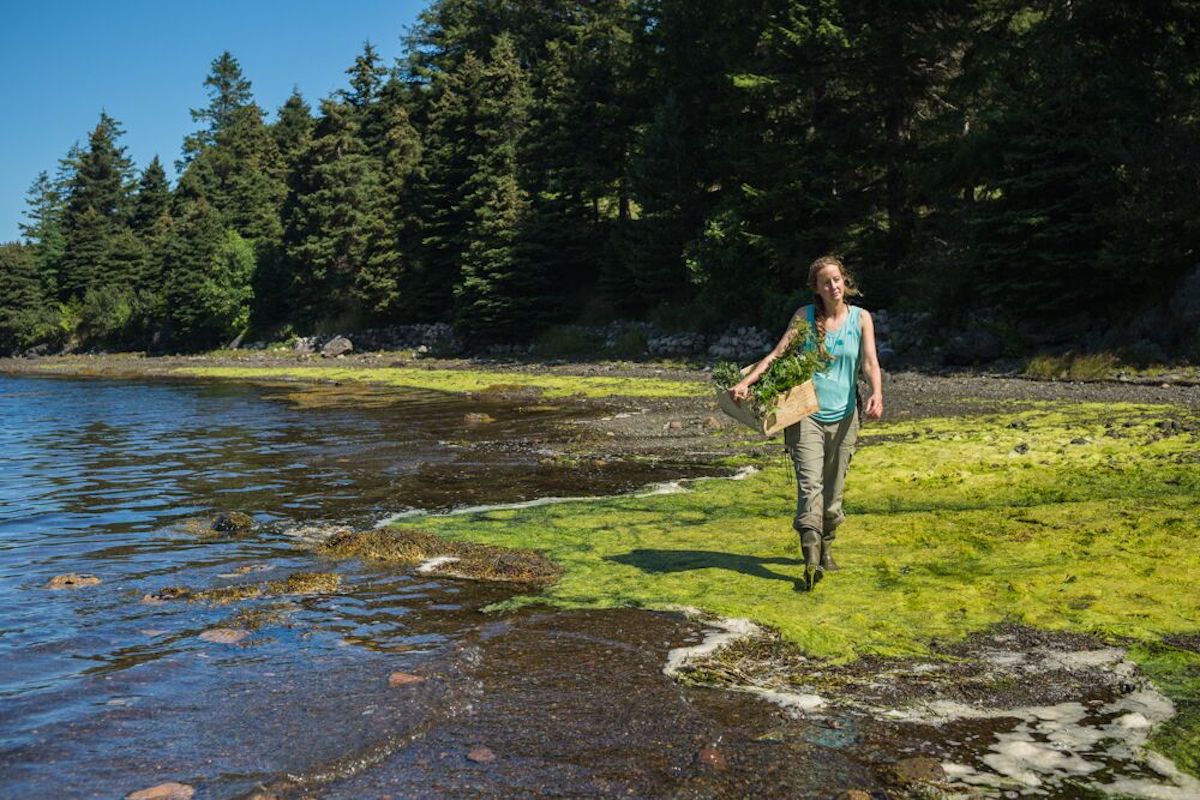
In the spring of 2011, Lori drove to a bog, picked a load of cattails, then knocked on the back door of Raymonds, a 5-star restaurant in the city of St. John’s, and asked Chef Jeremy Charles, “Would you have any use for these?” He responded, “Yes! How much of this stuff can you get?”
Lori read books about nature and traditional cooking. She talked with her parents and old-timers. Before long, the self-taught field naturalist became familiar with weather patterns, where wild plants grew, and how and when to harvest.
“I felt a connection to my grandfathers and my dad. I discovered how Newfoundlanders lived with the sea—in all its savagery and beauty. It’s what knits us together and makes us who we are today.”
Coming into her own as an entrepreneur
Fast forward to 2014. Over a cup of tea, Lori told her mom that she wanted to combine what she experienced growing up with her new-found knowledge and share that with others.
“Imagine if people could experience picking berries or eating fish stew …”
Aha! She would take people foraging and to the shore, so they could experience these things first-hand. That led into a business Lori created called Cod Sounds where she provided workshops such as Bushcraft Basics, Fireside Cooker, Fur & Feathers, and On The Hunt—to name just a few. Participants picked up a few skills, learned about Newfoundland culture and tradition, and feasted on the best the land had to offer.
I had the pleasure of foraging with Lori in December of 2018. In sub-zero weather, we headed to the wee village of Quidi Vidi outside of the capital city of St. John’s and hiked up Sugar Loaf Trail. There, we picked sweet gale and tiny alder buds, which we later ground to season homemade salt back at Lori’s workshop/studio.

Lori McCarthy’s fish stew / Photo provided by Sandra Phinney

A common sight during berry-picking seasons in NewfoundLand! / Photo provided by Food Culture Place

Lori McCarthy during a winter forage / Photo provided by Sandra Phinney
“This trail grows a wild abundance of berries, and all fall you can see all hands arse up picking blueberries, partridge berries, crowberries—you name it,” said Lori. We also harvested fir tree needles which Lori later added to a mix of dried summer-foraged herbs for tea.
Back in her food studio, we warmed up with teas and gobbled up ‘Nans traditional tea buns’ smeared with partridge berry jam while Lori prepared cod chowder made the old-fashioned way (no milk). Lori also whipped up sizzling strips moose graced with alder tips and Labrador tea. As we enjoyed our final morsels of moose, Lori’s mum entered the room with hand-pulled taffy she had made with her grandchildren.
The making of an award-winning book
When professional photographer Marsha Tulk received a gift certificate from her husband to take a rabbit butchery course from Lori, she had no idea that she and Lori would become fast friends and co-author an award-winning book.
When they met, Lori was in the process of starting three-day and six-day cultural residencies and rebranded her company as Food Culture Place, operating from her new studio in Mobile, 40 kilometres south of St. John’s.
By the time COVID-19 appeared, Marsha and Lori had become fast friends. They put their collective skills to work and wrote Food Culture Place — Stories, Traditions, and Recipes of Newfoundland.
The authors organized the book according to the four seasons, with stories, and photos both new and old.
“This is how many people still eat on this island. We hunt, fish, harvest, smoke, salt, bottle and preserve it when it’s in season,” Lori says, “to be enjoyed and treasured later.”
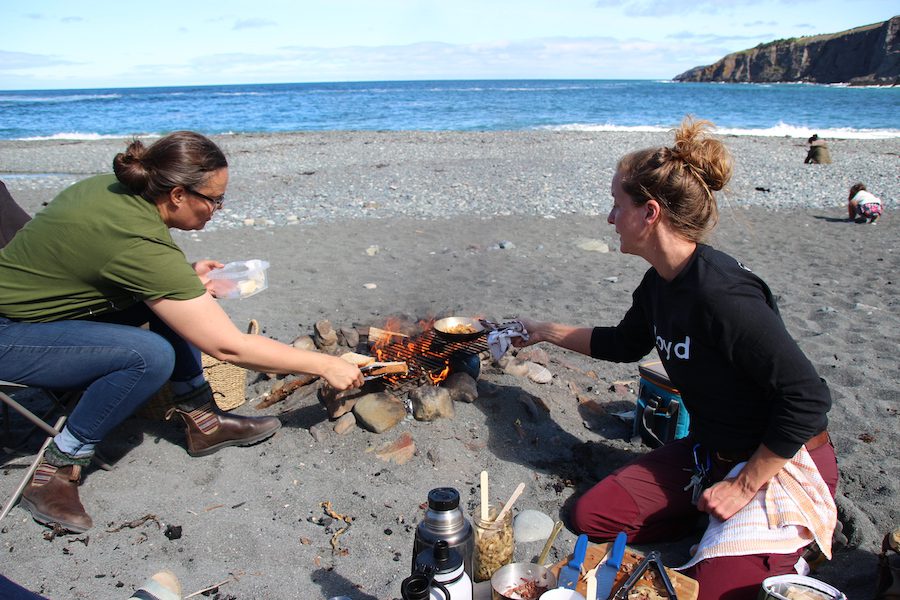
Lori and Marsha prepare a beach lunch / Photo provided by Sandra Phinney
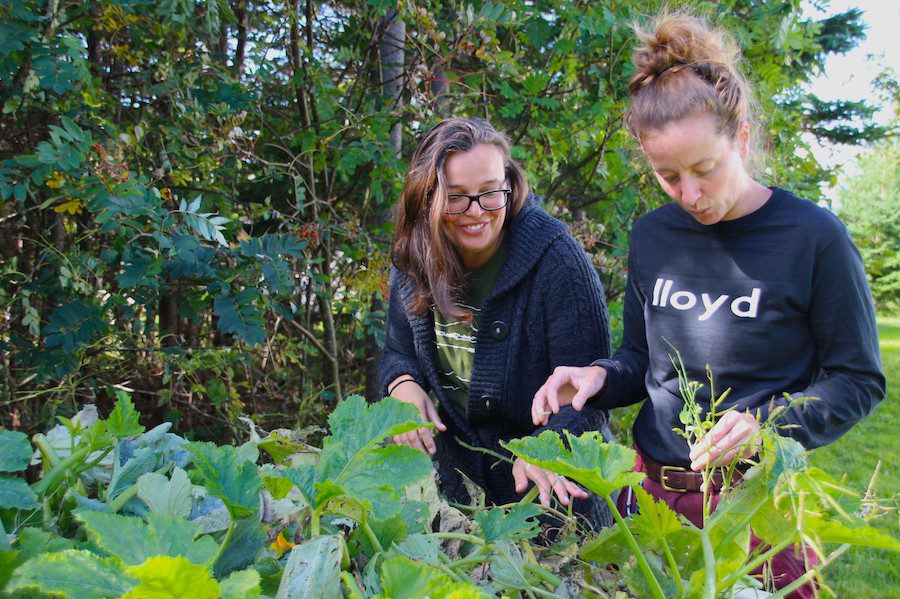
Of course, there are recipes with each story such as Seal Flipper Supper, Barley Stuffed Squid, Pickled Fireweed with Coriander and Cumin, and Moose Pastrami.
A smaller section in the back of the book titled “Wild-crafted Pantry” outlines edibles from the wild that Lori and Marsha forage to use in cooking. Many are common throughout Atlantic Canada including sweet gale (Myrica gale), stinging nettle (Urtica dioica), dulse (Palmaria palmata) and rose petals (Rosa sp.)
It’s evident why Food Culture Place won the prestigious 2022 Gourmand World Cookbook Award in the category of Food Heritage Books. Authors from more than 200 countries submit books for consideration every year.
Total cultural immersion
Lucky me, I received a copy of this book and wrote a review. But I couldn’t leave it at that. In the fall of 2022, my sister Carmen and I took an extended trip to Newfoundland. The first thing we booked was a three-day immersion program with Lori and her team.

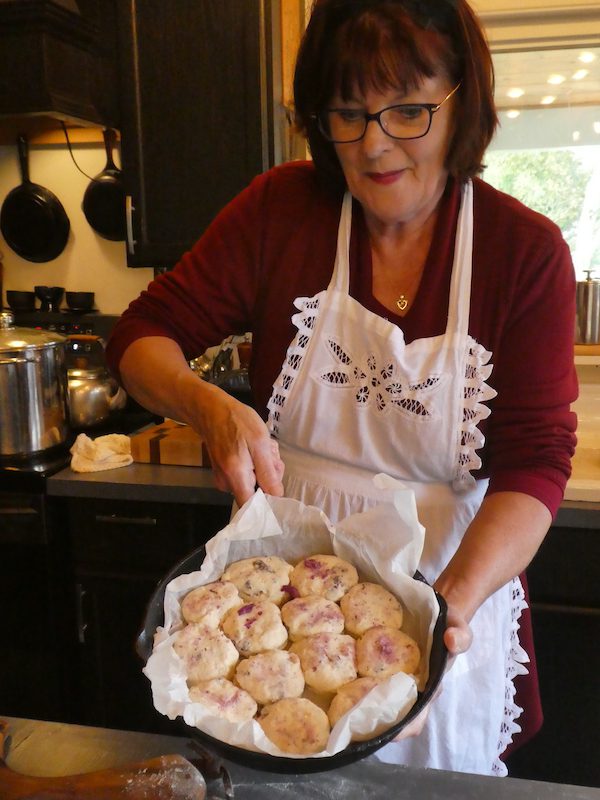
Oh my. We foraged for mushrooms and berries, had a boil up on the beach, cooked a full Jigg’s Dinner in her studio and made biscuits with her mom. The experience of being immersed in traditional Newfoundland activities, laced with stories and down-home hospitality, was tasty and memorable. I yearn to return!
How to get to Newfoundland and Labrador
Newfoundland and Labrador is Canada’s most easterly province, and includes the island of Newfoundland and the continental region of Labrador, which borders Quebec. For airports in various regions, check here. All airports have car rental services including Budget, Enterprise, Avis, and Thrifty. You can ferry to Port Aux Basque or Argentia in Newfoundland from Sydney, Nova Scotia. For a fabulous site including where to go and what to do, check here. Looking for a place to stay? Click here to check rates on booking.com.
Read More Tales From Atlantic Canada
Meeting a Legendary Heroine, Elder Tshaukuesh Elizabeth Penashue, in the Big Land—Labrador, Canada
Sandra Phinney recounts her experience with Tshaukuesh Elder Elizabeth Penashue while learning about the land in Labrador, Canada.
30 Less-Travelled Places for Women in 2024
For our 30th anniversary, JourneyWoman reveals 30 less-travelled places for women in 2024, according to our writers and travel experts.
An Ode to Volunteers: Inspiring Lessons from the ‘July Project’ in Yarmouth, Nova Scotia
Acknowledging the volunteers and ‘heavenly invisibles’ who make our travels possible and are the backbones of our communities.

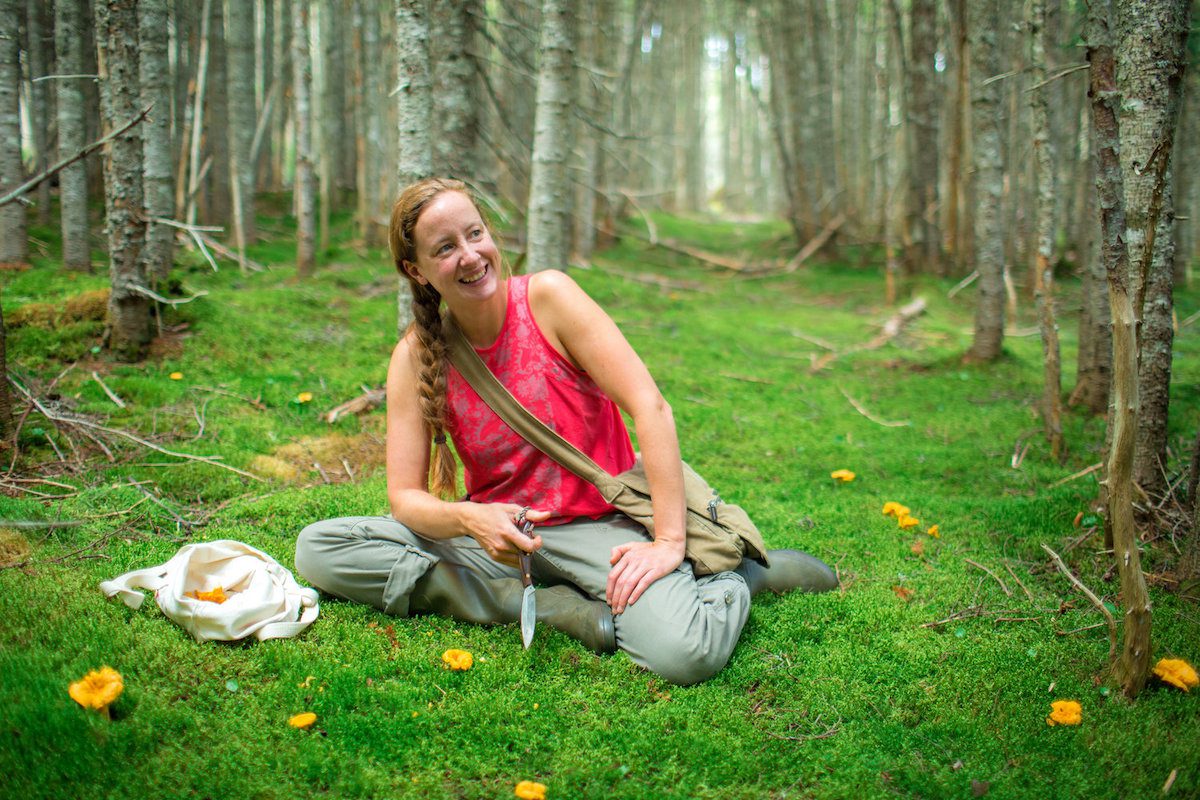




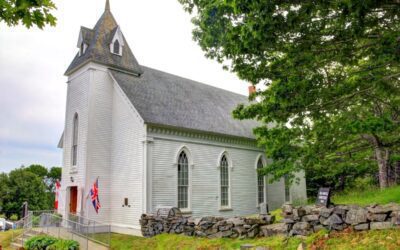
0 Comments
We always strive to use real photos from our own adventures, provided by the guest writer or from our personal travels. However, in some cases, due to photo quality, we must use stock photography. If you have any questions about the photography please let us know.
Disclaimer: We are so happy that you are checking out this page right now! We only recommend things that are suggested by our community, or through our own experience, that we believe will be helpful and practical for you. Some of our pages contain links, which means we’re part of an affiliate program for the product being mentioned. Should you decide to purchase a product using a link from on our site, JourneyWoman may earn a small commission from the retailer, which helps us maintain our beautiful website. JourneyWoman is an Amazon Associate and earns from qualifying purchases. Thank you!
We want to hear what you think about this article, and we welcome any updates or changes to improve it. You can comment below, or send an email to us at [email protected].